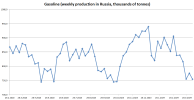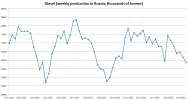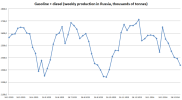An important obstacle has now been cleared of the way.
During the NATO summit in July last year, Nettavisen was able to report that Norway entered an F-16 coalition, in order to train Ukrainian personnel, and eventually deliver combat aircraft to Ukraine.
At the beginning of January, Norway sent a couple of fighter planes to Denmark. There, Norway has contributed by training both Ukrainian pilots and support personnel.
Close to a year after the NATO summit in July, it is still unclear how many F-16 aircraft Norway will donate to Ukraine, and when they will be combat-ready. There are many indications that there will be no Norwegian-donated aircraft in Ukrainian airspace until after the NATO summit in Washington in July.
Thumbs up from the Americans
Nevertheless, we have now received a hint about how many combat aircraft Norway may end up donating. The website
Zona Militar writes that the US authorities recently approved the transfer of 65 F-16s from the Netherlands, Denmark and Norway to Ukraine.
Although the US will not transfer aircraft itself, US authorities must approve the transfer. It is part of the agreement the US has with countries that have purchased the F-16 and other weapons systems. In this way, the United States retains some control over its own weapons technology, and avoids the technology ending up in the hands of hostile countries.
The website writes that Norway has now received permission to transfer 22 F-16s, as well as engines, support material, simulators, spare parts and other relevant equipment.
Nettavisen gets confirmation that this is true.
As Nettavisen understands it, there is no question of Norway having 22 fully operational F-16 aircraft that we will send to Ukraine. Several of the 22 hulls are not necessarily airworthy, but can still be useful for Ukraine, for example as spare parts.
American agreement put on hold
In December 2021, it became known that Norway entered into an agreement for the sale of 12 Norwegian F-16s to the American company Draken International. These planes are airworthy, and still in Norway.
The sales agreement with Draken International does not seem to be implemented, and the planes that were supposed to be used for training in the USA will instead be used to defend Ukrainian airspace.
In other words, it is reasonable to assume that 12 of the 22 aircraft that have now been approved for transfer to Ukraine are fully operational, while ten of the airframes have an unknown standard.
Great Ukrainian need
Lars Peder Haga is an associate professor at the Norwegian Air Force School, and an expert on Soviet and Russian air power. He emphasizes to Nettavisen the need Ukraine has for parts aircraft.
- How much combat power Ukraine gets out of this depends on what kind of weapons package they get, and how well and quickly they succeed in mastering aircraft and tactics, Haga believes.
He believes that this should not be expected to be enough for the war to turn in Ukraine's favor already this year.
Decisive for Ukraine
- In the medium term, this is absolutely crucial for Ukraine to have a combat air force at all in a couple of years. The planes will also be an adversary the Russians must take into account, which will make the technological advantage they have less over time, he believes.
He reckons Ukraine wants at least 100 Western fighter jets to replace its current fleet of old Soviet-made fighters.
Haga emphasizes that there is still a limit to how many planes Ukraine can receive at short notice, because air bases must be arranged and support equipment built up.
- This is very good news and an important milestone on the way for Ukraine to build a modern air force that can share weapons, parts and not least knowledge with air forces in the West.
The Ministry of Defense in Norway is tight-lipped when Nettavisen asks for a comment on the news.
- The government has decided to donate a number of F-16s to Ukraine as part of a multinational collaboration. The exact number and timing of the donation to Ukraine will be determined in dialogue with Ukraine and the other donor countries, writes press officer Lars Gjemble in an email.







 Joo, uskoisin että paremmin kuin useimmat toiveikkaat foorumilaiset täällä.
Joo, uskoisin että paremmin kuin useimmat toiveikkaat foorumilaiset täällä.